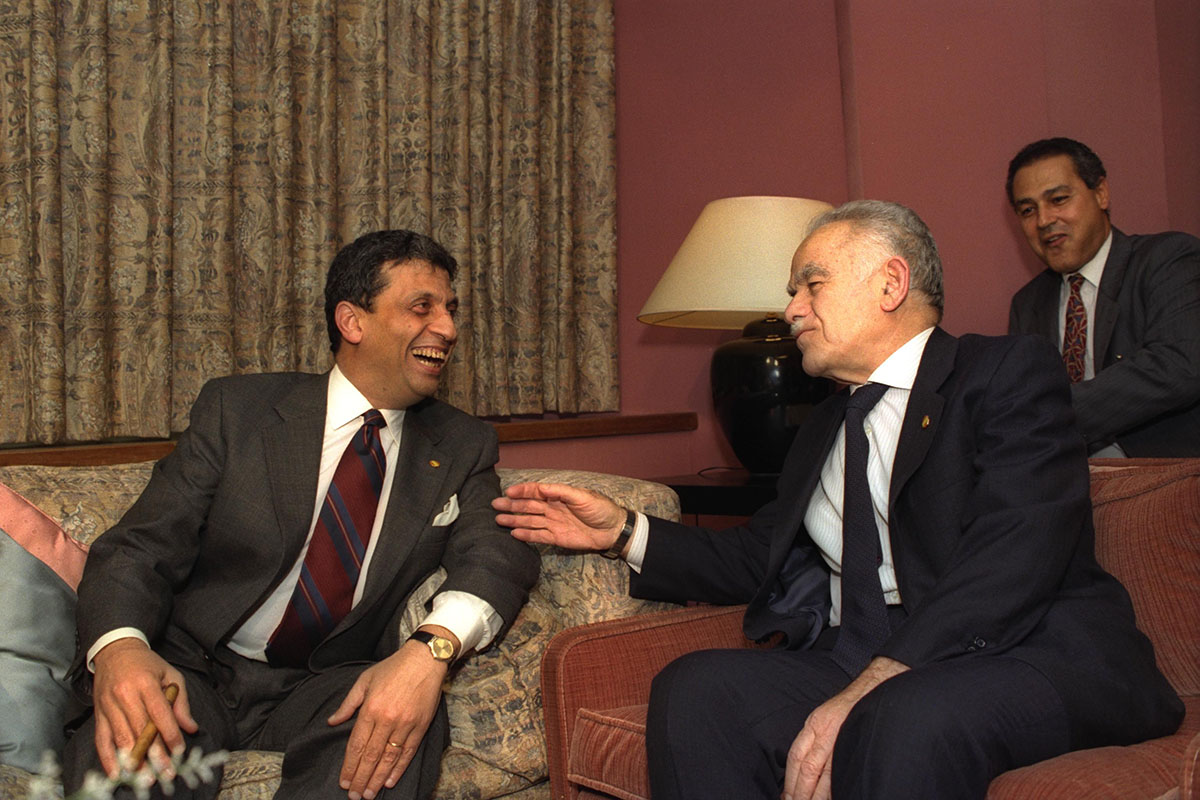
Personal relationships and individual leadership styles can enhance or hamper negotiations. As an example, watch this video of Syrian Foreign Minister Farouk al-Shara and Palestinian delegate Saeb Erekat relishing memories of irritating Israeli Prime Minister Yitzhak Shamir.
- Israeli Prime Minister Yitzhak Shamir
- Jordanian Foreign Minister Kamel Abu Jaber
- Palestinian delegate Haider Abdel al-Shafi
- Syrian Foreign Minister Farouk al-Shara
- Lebanese Foreign Minister Fares Bouez
- Egyptian Foreign Minister Amre Moussa
- U.S. Secretary of State James A. Baker III
- U.S. President George H.W. Bush
- Soviet Foreign Minister Boris Pankin
- Soviet President Mikhail Gorbachev
- Dutch Foreign Minister Hans van den Broek
Assume the roles of the negotiating parties. First compile a complete list of issues to be resolved, then determine which issues would be best to start negotiations. Identify those issues that will likely lead to acceptable and enforceable compromises so as not to implode and derail the talks altogether. Debate the issues and identify the three most easily resolvable issues from your list. Re- enact the conversations behind closed doors based on the background, leadership styles, national interests and more.
Discuss how gestures, comments and personal leadership styles either engendered or mitigated mistrust. Would different delegates in key positions have made a difference to the outcome of the negotiations? As examples, Israel’s delegation was led by the head of its government, Prime Minister Yitzhak Shamir, while its neighbors were represented by foreign ministers, who didn’t hold final authority. Meanwhile, the Palestinians had to share a delegation with the Jordanians, and only residents of the West Bank and Gaza, not Jerusalem or anywhere else, were eligible. That rule excluded some prominent Jerusalem residents with firsthand knowledge of the conditions under Israeli control, such as Faisal al-Husseini and Hanan Ashrawi, and members of Yasser Arafat’s PLO leadership in Tunis.
How was trust ultimately gained during the process of peace agreements with Egypt and with Jordan? What were the guarantees, incentives, interests and deterrence from reneging (carrots and sticks) that were built into the agreements as part of the trust- building process? What can be learned from the past about the potential for shifting mindsets?
